Remainder Theorem of Numbers | Remainder Problems in Aptitude
Before going to concepts of remainder theorem of numbers, it is better to understand the the concepts of Divisor, Dividend, Quotient and Remainder

Remainder Theorem Rule – 1 (Fundamental)
Remainder of the expression can be expressed as positive remainders and negative remainders. Technically both positive and negative remainders are correct.
But remainders by definition are always non-negative. So final answer to be expressed in positive value only. For simplification of solution take negative remainder and finally it is to be convert into positive remainders.
Note:
- Add divisor to negative remainder then it will gives positive remainder
- Subtract positive remainder from divisor then it will gives negative remainder
Example – 1 : Find the remainder of the expression of 49 / 9
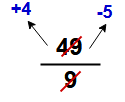
In this question
Positive remainder = +4
Negative remainder = -5
As per the remainder theorem the final answer is “4 “
Example – 2 : Find the remainder of the expression of 107 / 9

In this question
Positive remainder = +8
Negative remainder = -1
In this expression finding the negative remainder is very easy when compare to positive remainder.
So take negative remainder “-1″ and add to it divisor ” 9″ then gives final answer = – 1 + 9 = 8
Remainder Theorem Rule – 2 (For long expressions)
The remainder of the expression will be the same as the remainder of the expression
Where
AR is the remainder when “A” is divided by ” N”
BR is the remainder when “B” is divided by ” N”
CR is the remainder when “C” is divided by ” N”
DR is the remainder when “D” is divided by ” N”
Example – 3 : Find the remainder when 47 x 52 is divided by 6
Solution: 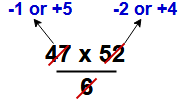 Here remainder for 47/6 is -1 or 5 and 52/6 is -2 or 4
Here remainder for 47/6 is -1 or 5 and 52/6 is -2 or 4
Case – 1 : -1 x -2 = 2/ 6 remainder = 2
Case – 2 : –1 x 4 = -4 / 6 remainder = – 4 + 6 (add divisor) = 2
Case-3 : 5 x -2 = -10 / 6 remainder = – 4 + 6 (add divisor) = 2
Case – 4 : 5 x 4 = 20 / 6 remainder = 2
As per the reduces the calculation we can choose the option
Remainder Theorem Rule – 3 (Cancellation rule)
For simplification of the expression of the sum, you should try to cancel out parts of the numerator and denominator as much as you can, then final remainder to be multiplying the canceled number to get the correct remainder.
Example – 4 : Find the remainder of 54 divided by 4.
= 54/4 = 27 / 2 ( cancel out by 2 of the numerator and denominator )
Then remainder is of the final expression is 1
Final reminder for the given expression is = 1 x 2 = 2
Remainder Theorem Rule – 4 (remainder of a number with power )
There are two rules which are effect in order to deal with large powers
Case – 1 : If we can express the expression in the form , the remainder will become 1 directly.
In this case , there is no matter how large the value of the power “n” is, the remainder is 1.
Example – 5: Find the remainder when (321)5687 is divided by 8
Solution: 321 can be expressed as [(8×40) + 1] so
remainder of the above question is (1)5687 = 1
Case – 2 : If we can express the expression in the form , the remainder will become ( – 1 )n
In this case , if n is even number then remainder will be 1 and if n is odd number then remainder will be (q-1)
Example – 6 : Find the remainder when (146)56 is divided by 7
Solution: 146 can be expressed as [(7×21) – 1] so
Remainder of the above question is (- 1)56 = 1
Example – 7 : Find the remainder when (269)57587 is divided by 6
Solution: 269 can be expressed as [( 6x 45) – 1] so
Remainder of the above question is (- 1)57587 = – 1 = -1 + 6 = 5
Remainder theorem problems and solutions
Example – 8 : Find the remainder when 73 x 75 x 78 x 57 x 194 is divided by 25
Solution:
= 0
Remainder theorem shortcut tricks : If denominator is perfectly divisible by any one number of given numerator expression values then remainder of the hole expression is Zero.
Example – 9 : Find the remainder when 84 + 98+ 197 + 240 + 140 is divided by 32
Solution:
So remainder of the above expression is 23
Example – 10 : Find the remainder when 1753 X 1749 X 83 X 171 is divided by 17
Solution:
So remainder of the above expression is 8
Example – 11 : Find the remainder when 385 is divided by 6
Solution: Here 6 can be written as 3 x 2 so ( cancel out by 3 of the numerator and denominator )
Remainder is 1
Final remainder of the given question = 1 x 3 = 3
Example – 12 : Find the remainder when 270 is divided by 96
Solution: Here 96 can be written as 25 x 3 so ( cancel out by 25 of the numerator and denominator )
Remainder is -1 + 3 = 2
Final remainder of the given question = 2 x 25 = 2 x 32 = 64
Example – 13 : Find the remainder when 25102 is divided by 17
Solution: Here 25 / 17 gives remainder is 8 so
Remainder of the sum is 4
For more sums on remainder theorem go through the below link
Remainder theorem hard problems with solutions
Topics in Quantitative aptitude math for all types of exams
Shortcut Math Tricks for helpful to improve speed in all calculations

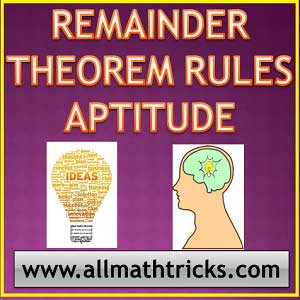
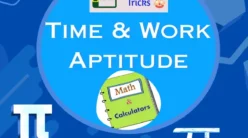

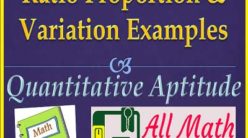
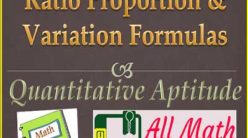
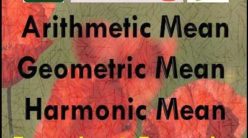
4 thoughts on “Remainder Theorem for Number System | Remainder Theorem Difficult Examples”
homeremediesliving.us
(August 19, 2018 - 4:24 pm)There is definately a great deal to find out about this topic.
I love all the points you’ve made.
sivaalluri
(September 26, 2018 - 4:04 pm)Than you homeremediesliving
Nivedha
(March 17, 2023 - 2:05 pm)Thankyou for crystal clear explanation
Khushi
(April 24, 2023 - 4:44 pm)Giid